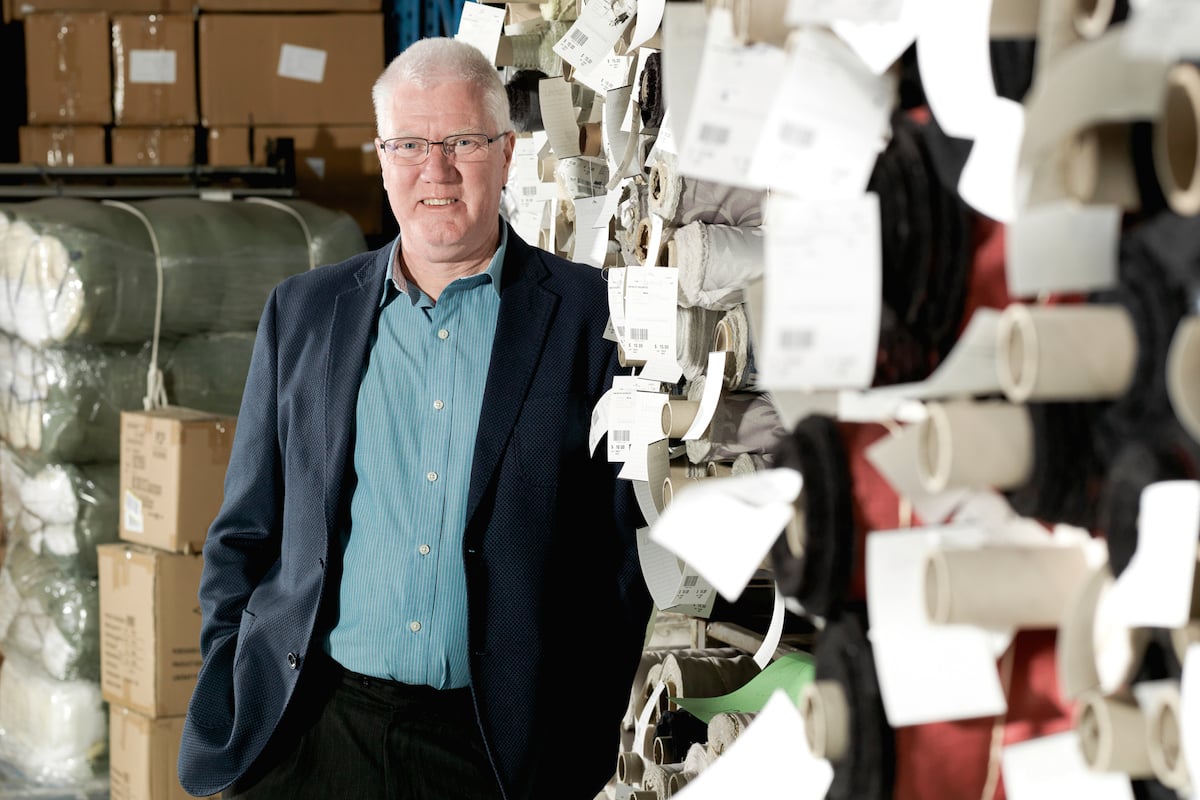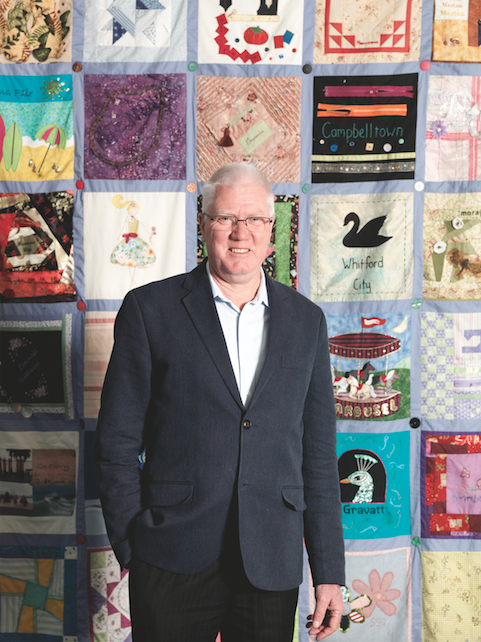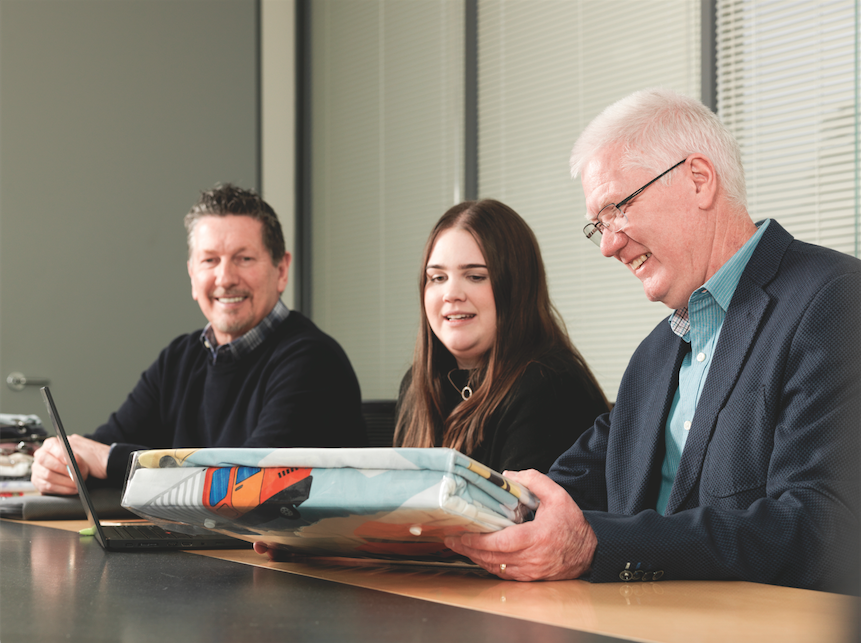There’s a certain weight that lifts when needs become wants. For years, manchester and haberdashery retailer Lincraft was a response to a public need to make their own clothing. If it’s hard to imagine such a need was ever widespread, consider that Lincraft has grown from a Melbourne market fabric stall in the 1950s into a chain of over 60 stores across Australia and New Zealand.

But as times change, so does purpose. Though homemade clothing is no longer as common as it once was, Lincraft hasn’t abandoned the business of giving the people what they want. “That’s one of the real things about Lincraft,” says the company’s Managing Director John Maguire.
“We’re a business that’s all about giving customers the products they need to create something.” Whereas the Lincraft of old sold much of its inventory to meet those needs, today things are a bit more relaxed.
Walk into any Lincraft store and you’ll find a wide range of fabrics, haberdashery, knitting yarns, soft furnishings, arts and crafts to put a personal stamp on any project, big or small. “It has slowly changed to the point where today, Lincraft is really for hobbyists, for those who want to individualise what they create,” John says.
But just 15 years ago, Lincraft was hanging on by a thread. At the time, John was Director of the Dimmeys discount chain he’d rescued from closure a decade earlier. “It was suggested that we have a go at buying Lincraft,” he says.
Our customers are very much creative, very visionary, and they love to make personalised gifts.
“The business had fallen into some financial difficulties and was bleeding pretty badly. I decided to put my money where my mouth was.” Along with a consortium of silent partners, John bought the ailing Lincraft and began to turn things around immediately.
“We had to pull the rug out from under the business, so to speak, and get costs under control,” he says. The group wanted to avoid turning Lincraft into another discount retailer, but lessons learned from the Dimmeys’ experience proved valuable in course correcting.
“It probably took two or three years, and even to this day, we’re constantly reviewing the situation,” John says. “It’s really about operating the business in a more cost-effective way to ensure that we get the same business naturally and make sure that the customers can get what they want at a competitive price.”

According to John, to maximise margin and minimise costs took a certain courage. “We had to have the audacity to say ‘Right, all these brands we sell every day are very low margin, and if we’re going to remain in business, we’ll have to import a lot of this ourselves and add value and quality to the product.’”
For Lincraft, that meant building a house brand that bucked the low-quality trend. “We had to convince customers that even though our product range is house branded, the quality and the value is much better than some of the house or even some of the national brands they used to buy,” John says.
“It took us many years to source the right products and make sure the quality was good enough to give us the confidence to make it a part of our house brand.” The result of this effort is that 80% of Lincraft’s sales are comprised of its own branded products. “In many ways, it’s a bit like what Aldi has done in the supermarket industry,” John says.
The leaner Lincraft of today continues to slim down and increase its agility, and ecommerce has made it easier to trim the fat. “We believe we have a model that’s very efficient and effective,” John says.
We’ve kept true to the focus on being a store for creators. People know what lincraft stands for as a brand, and that’s creativity.
“We’ve reduced store sizes and let go of the sites that weren’t performing so well and, as a result, we’re now at the point where we can expand the business again.” Expansion plans include an increased presence in New Zealand, where Lincraft has six stores. “We’ve also got a good balance of stores here in Australia, and there is certainly an opportunity to grow that market,” John says.
“We are predominantly represented on the east coast and in South Australia, but there’s an enormous growth opportunity within the cities of Sydney, Melbourne and Brisbane in particular.”
A key part of Lincraft’s quick and decisive moves is its small management structure. “There are only three of us on the leadership team,” John says. “We only have five buyers. There’s an open-door policy and people can bounce ideas off each other. Right through the business, anybody can talk to anyone. It’s a family-type affair. If you need to make a decision, you just make it.”
Company culture very much respects the Lincraft team that’s helped make the chain what it is today. “I’m really proud of the team and how they’ve adapted so well to change,” John says. “When I first arrived, I was really surprised by the willingness of the team to just get on with it, despite the major changes going on within the business. Everybody just got stuck in and made things happen.”

This same team saw Lincraft sail through the uncertainty of COVID-19, when the product range, so particularly suited to staying at home, took on a new relevance. “People came in droves trying to buy things to do,” John says.
“We decided early in the piece that we’d remain open, but no-one knew what was going to happen. And our team still just got up every morning, went to work with enthusiasm and did everything in their power to make sure the business survived.”
And survive it has. Lincraft remains a staple of Australian shopping centres, just as its products are a staple of rainy Saturday afternoons. “We’ve kept true to the focus on being a store for creators,” John says.
“People know what Lincraft stands for as a brand, and that’s creativity.” As long as there’s creativity, there’ll be Lincraft. John believes what makes the company special is its customers.
“Our customers are very much creative, very visionary, and they love to make personalised gifts,” he says. “After all, anyone can go out and buy something from a shop, but to actually put in the time and effort to make something for someone is definitely so much more special.”
Proudly supported by:



